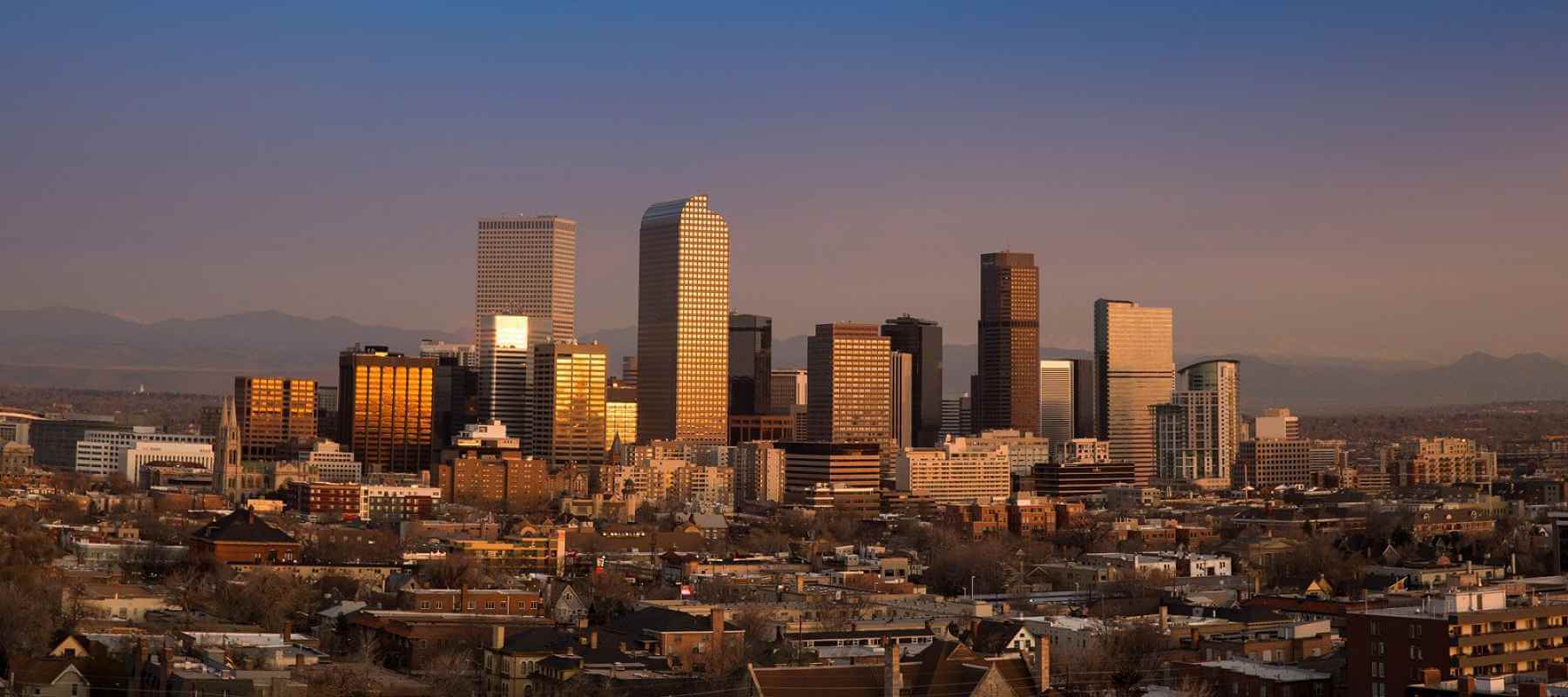Denver is growing, and real estate development in the area is flaming hot in 2020. What’s happening? What does it mean for developers, businesses, employees, and consumers? Let’s take a look.
Big Developments Taking Root In Denver
Back in 2018, Paul Hyde, who already has a number of developments under his belt in Fargo, North Dakota and Minneapolis, Minnesota, broke ground on an industrial park along Colorado’s Front Range in Brighton. The overall target buildout is approximately 1.8 million sq. ft of world-class warehouse and logistics space.
One building (350,000 sq. ft) is currently underway, and an even bigger 500,000 sq. ft sibling building is due to break ground this month. At 76 Commerce Center, one cross-dock building is already complete. With big-name tenants like Walmart, it’s already fully leased out.
Hyde Development and M.A. Mortenson Co., a major construction company, are collaborating on the 122-acre park venture. Plus, the duo has big plans for another joint industrial real estate venture. This one, named HighPoint Logistics Park, will be a sprawling 2.2 million square feet of space on 125 acres near Aurora’s E-470 and East 64th Avenue interchange.
Location is pivotal to the project. Hyde points out that the Aurora property is surrounded by a lot of new housing, which he expects will provide the labor to support the park and incentivize companies scouting for locations.
According to Hyde, adding job growth and rooftops drives industrial space demand, and the numbers indicate that Denver’s industrial real estate market is on an “extended winning streak.”
Todd Witty, Vice President of real estate services firm CBRE and a team member for the seller of the HighPoint property, agrees. Witty says the area has enjoyed 18 straight years of positive industrial space leasing activity.
CBRE’s latest market report showed that 4.5 million sq. ft and 2.9 million sq. ft of Denver’s industrial space was respectively soaked up in 2018 and 2019. Over 5 million sq. ft from 35 different completed projects introduced new space to the 2019 market, and there was an additional 6.5 million sq. ft of space still under construction at the close of last year. Due to many, such as the 76 Commerce Center, being built on a speculative basis, vacancy numbers for 2019 closed at 6.6 percent, but Witty points out that speculative projects still had a 37 percent pre-lease by the time of opening.
Over the past few years, the city’s industrial transaction market has largely been dominated by Amazon, which currently has four distribution centers in the area and supplies some 4,000 Coloradans with packing and shipping jobs. Amazon actually just announced plans for a fulfillment center that’ll add 800,000 square feet of space and support over 1,000 more jobs. It will be located in an airport-owner business park in El Paso County.
According to Bob Cope, an economic official for Colorado Springs, the city’s population is expected to double over the next century. Many companies, like Amazon, are looking to gain a distribution foothold. FedEx, too, already has two large facilities in the airport’s 900-acre park.
Demand Begets Demand
Of course, the legalization of marijuana growth and storage has bolstered the race for quality industrial space. However, it’s perhaps the high demand by consumers for goods to be delivered fast and conveniently that’s one of the biggest forces shaping the market. Manufacturers from Walmart to Tempur-Pedic are chasing industrial space with a key component - proximity to its customers.
CBRE statistics show that the distribution hub for the metro area remains the 87 million square feet of space near the Interstate-70-airport. But, the market lines are slowly being reshaped.
The I-76 corridor, for example, offers over 10.5 million square feet of industrial space and has another million square feet under construction. In the west metro area of Arvada, Cale Enterprises just broke ground on an industrial park bringing 142,000 sq. ft of spec space via two buildings.
Such submarkets are growing due to increasing 1-70 congestion, which is a major problem for warehouse tenants. This, combined with being able to circumvent the I-70 expansion project with E-470’s toll road, is exactly why Hyde and Mortenson went with the HighPoint property for their project. Prospective tenants even told Hyde they’d rather pay a toll than to have their employees stuck in I-70s traffic.
Avoiding just such a traffic problem was the biggest selling feature for Great Plains Moving and Storage. After over 120 years at their former location near I-70 and Havana Street, the company moved into 81,773 square feet of space at 76 Commerce Center.
Michael Berman, president of Great Plains Moving and Storage, says the building sold itself. The company specializes in handling high-value assets, and it’s warehouse is so diverse that it can contain anything from motorcycles and antiques to medical and computer equipment. Berman says that the new location has helped attract high-value employees in addition to offering more favorable roadways.
According to Greg Macaluso, an expert in supply chain solutions and consulting and instructor at The University of Colorado Boulder, there’s a growing reorganization trend within major distribution centers/warehouses. Once upon a time, they were mere collection points between manufacturers and retailers. Today, thanks to Amazon’s DTC model, many are dedicating a portion of their space to directly deliver goods to consumers. Macaluso calls it forward-places logistics. While he says it’s hardly economically and ecologically sustainable for the long run, there’s no denying the role the model is playing in spurring the demand for suitable industrial space in growing cities like Denver and Phoenix.




